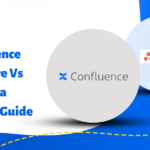You may be a fantastic business service provider but lose money to inefficient revenue-cycle management. Even worse, it can go on forever without you realizing it’s happening. Implementing the right RCM solution can help improve payment collection efficiency and increase your ROI.
What is Revenue Cycle Management (RCM)?
RCM includes the steps taken to identify, manage, and collect service revenue from the clients of a business. It comprises administrative and operational functions, such as pre-registration, payment completion, and all services involved in the process. It provides an efficient payment collection and revenue generation solution.
Read on for the top 10 reasons your business needs revenue cycle management.
Why Does My Business Need Revenue Cycle Management?
A revenue cycle covers all areas of client interactions in practice services, and every business needs RCM to increase efficiency and establish permanent growth. It includes all parts of your billing process, from a client’s first encounter until they complete payment.
However, its impact goes much further.
An efficient revenue cycle enables growth, real-time tech updates, and increased response speed when handling clients. On the other hand, not having an effective RCM service overwhelms practice and increases frustration. It destroys revenue generation structures and can even lead to a business closing.
Why is revenue cycle management important for business?
Here are ten important reasons why you should implement RCM:
- Integrated Billing: Billing information and accessibility are vital to building healthy payment collection mechanisms.
RCM allows businesses to build a client portal with integrated payment collection and communication technology. The client portal is essential to increasing user engagement and driving conversions. It helps individuals gain a detailed perspective of the services they receive.
Users can open the portal to get a detailed report of their expenses, make inquiries regarding charges, set appointments, and make payments for different services.
- Pricing Transparency: You can help your patients understand the flow of charges on their medical bills, including upcoming payments. RCI provides price transparency tools that help businesses outline the cost of their services upon meeting a client.
For instance, in health services, a patient can estimate and plan for the cost of care services more accurately, including determining the relevance of service plans.
RCM helps you make important decisions regarding services and subscriptions. It provides an efficient payment platform for both clients and service providers.
- Faster Payments: Revenue collection is essential to running a sustainable practice, and transparent pricing mechanisms bring tremendous financial improvements. Revenue cycle management tools increase payment collection with minimum billing efforts. It makes practice more profitable.
The RCM covers all areas of the customer’s journey, including appointment setting, insurance eligibility screening, charge capture, claims reception and denial management, coding, posting payments, and statement processing.
Managing all the abovementioned tasks takes time and can negatively impact cash flow. RCM gets your business all the money almost immediately. It is a consistent process with lower costs.
- Increase Staff Satisfaction: A successful revenue cycle management solution reduces the administrative burden carried by staff users and patients. RCM does all the heavy lifting, including insurance coverage verification and other redundant tasks.
Your staff can focus on high-value, client-facing tasks. It promotes personalization and allows you to focus on adding a human touch.
- Happier Patients: The expectations of client’s in today’s business environment are ever-changing. Each point of interaction within the revenue cycle impacts the overall customer experience. One negative billing experience can overshadow your whole service outcome.
You must ensure that your clients understand what’s involved in each process step. RCM uses automation to make it easy to schedule appointments, increase convenience, and establish consistency.
You can streamline the customer journey from the first appointment to the completion of their subscription.
- Optimized Revenue Pipeline: Revenue cycle management helps you optimize the financial pipeline of your business. It gives you visibility across the entire organization, allowing detailed data analysis, interpretation, and improved patient communication.
- Providing Value-Based Services: It’s crucial to reduce costs and increase service efficiency across an organization.
An effective RCM provides customizable reporting and data analysis tools that also help drive innovation and improve payment models. The data collected provides detailed logs of your customer’s transactions.
RCM eliminates administrative burdens that increase costs, lower billing charges, and ensures timely settlements.
- Claims Management: Revenue cycle management services ensure that all claims, including filings and bills to billers, are submitted in time for reimbursement. Including follow-up management.
Many businesses outsource these services to ensure a cost-effective team dedicated to analyzing and managing claims, submitting codes, and optimizing approvals. Tracking claims through reimbursement and reporting to ensure you receive payments on time.
- Denial Response Management: Denials are almost inevitable, considering the number of transactions your RCM solution may be processing.
When claims get denied, RCM ensures that your organizations handle the matter the best way it should. The provider may still get a quick payment if it gets resubmitted quickly. It ensures that practices avoid letting payments slip through the cracks.
- Multiple Payment Gateways: RCM helps businesses optimize collections by providing various payment channels to users. It offers flexible solutions with easy accessibility and increased convenience for bill payments.
RCM provides a 24/7 payment processing system that is always online and accessible to clients.
You can also outsource a team of expert billers to extend your RCM practice and optimize payment collections.
How Do I Find the Best RCM Software and Services?
You can agree that software today plays a vital role in the progress and improvement of many businesses across all industries. Even small service providers are finding a way to benefit from using revenue cycle management applications in practice.
RCM solutions help you optimize revenue collections and reduce workload burdens. Also, they provide convenient interactions for both the business and its clients.
It is crucial to avoid causing users pain as they move through your revenue cycle. Their experience determines everything. If they don’t like your service, they may leave for good. However, you can avoid all the pain and setbacks by ensuring you implement the correct solution for your business and client interactions.
How?
Finance and payment management are two challenging aspects of practice services. It’s even more problematic in areas like healthcare.
Some essential features to look out for when choosing revenue cycle management services include:
- Denial and rejection management
- SMS/Push message capabilities (e.g., appointment and payment reminders)
- Credit card attachment to files
- Payment processing solutions
- Live support
- Credentialing and Contracting
- Invoice management
- Real-Time Enterprise services
- Code Insights
To maximize your ROI, you should work with a vendor that establishes itself as a partner instead of a retailer. Your overall goal should be to get RCM functionality with an integrated medical billing solution. . To help you get started, here is the top revenue cycle companies list.
Many service providers weathered the challenges of COVID-19 better than others because they had partners working to provide prompt support and increase functionality.
How do I Measure My RCM Performance?
Before you can manage anything, you must first be able to measure it. You can highlight specific areas of improvement to outline an effective optimization strategy.
The first step in measuring revenue cycle management performance is determining your organization’s key performance indicators (KPIs) regarding your goals.
You can reduce billing and coding complexities and get paid on time. The size of your practice is not essential. All practice service providers should use revenue cycle management solutions to manage clients and revenue effectively.
To Wrap it Up
You don’t just need an RCM. Getting a revenue cycle management solution tailored to your organization is best. It will help you produce efficient accountability reports, improve transparency with communication, and provide detailed financial records.
Effective RCM services help you optimize your business processes and maximize profit generation.
Not sure where to start?
Contact us for a customized demo that shows you how to integrate revenue cycle management services into your daily practice routines to improve efficiency and patient experience.
Also Visit: What Are PFAS And What are the health effects?













